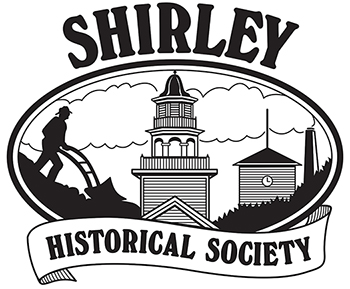Mills of Shirley Massachusetts
As soon as settlers came to Shirley in the 1720’s, they needed to clear the land and build houses. The first sawmills were soon erected to meet the needs of the settlers. These mills were erected on the Catacunemaug and the Mulpus by men named Longley, Hazen, and Haskell. Later sawmills were owned by the Whites of Woodsvillage, by Samuel Hazen at Slab City, and by Munson, Davis, and Ballou in Shirley Village. Photos of some of these mills are on file at the Museum.
The other service that early settlers needed was to have their grain ground into flour. Many sawmill owners erected a gristmill close by their sawmill and were able to provide for people’s needs in that way.
After housing and food were taken care of, the settlers needed help simplifying the task of making clothes, so clothier mills were erected to do some of the cleaning, carding, fulling, pressing, and dying of raw wool and flax. These mills were erected on the Mulpus, the Catacunemaug, and the Squannacook. Later mills began to manufacture cotton material from raw cotton shipped here from down south. We once had six cotton mills in Shirley, but now only two factory buildings remain – one that was later Samson Cordage Works, and one that was later President Suspender Company.
On the banks of the Nashua River, a series of mills was built to harness the power of the river. This particular site has been located partly in Groton, Shirley, Ayer, and Harvard over the years, and has often been known by the title of Mitchellville. There was a sawmill and gristmill at the site by 1790, and a paper mill by 1828. Later there were mills for manufacturing shoddy cloth and broadcloth, as well as cottages for the mill workers. Over the years, this Nashua River mill site has been owned or operated by men named Longley, Tobbey, Staples, Page, and Mitchell. In 1904 – 1925, instead of powering manufacturing, the river was harnessed to power the street railway cars. In the Museum collection there are photos of some trolley cars, and of building the bridge for them.
The most long lasting use of Shirley’s Nashua River mill site was from 1933 – 1976 when the Horgan family of Ayer, made ice at this location. (To see Bob Burkhardt’s pastel drawing of the ice house click here ) Although it was then abandoned for many years, the Mitchellville property is now coming back to life as Ice House Partners is creating a hydroelectric powered factory for Grady Research Company. Information on this project is also part of the Society’s collection.
The Museum library also has several books, on early mills, which researchers may use.
